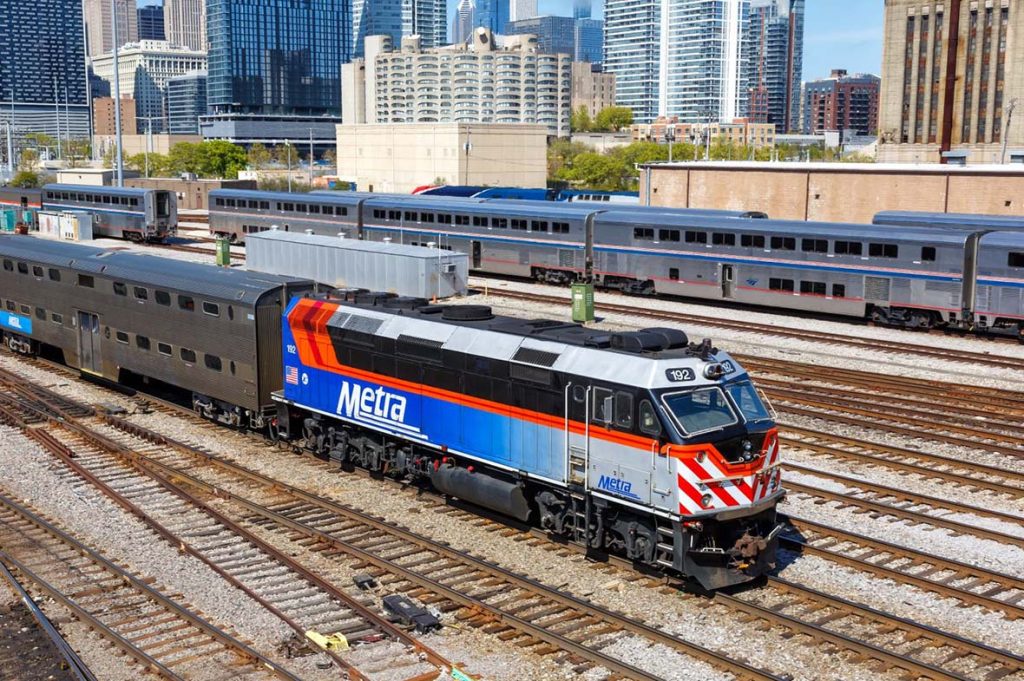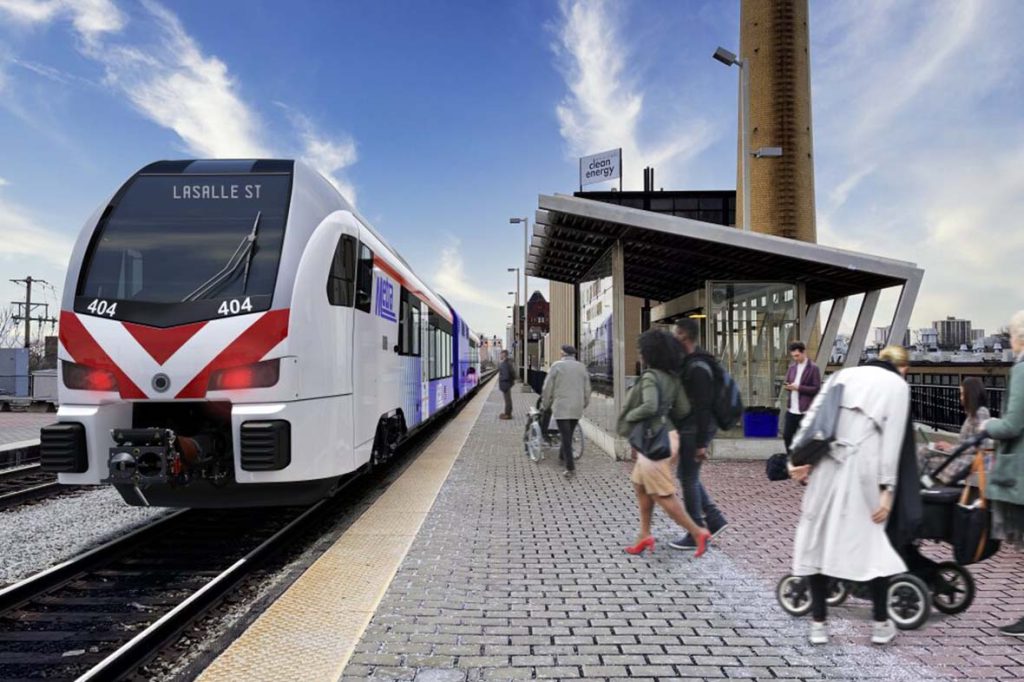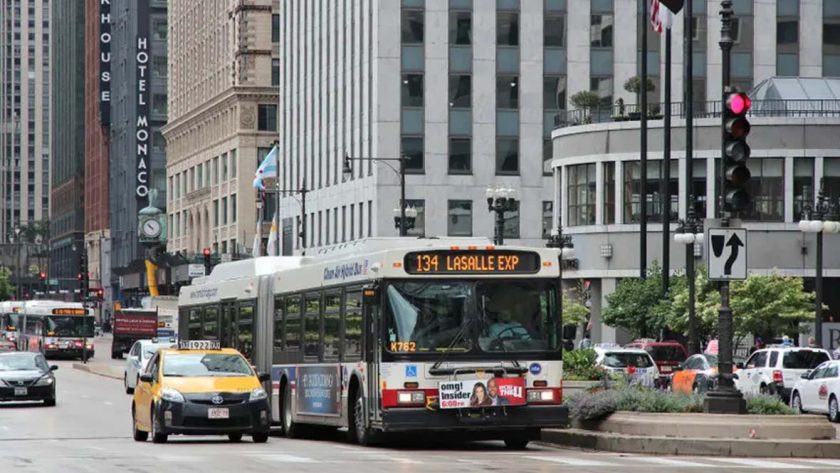Chicago, the Windy City, is known for its impressive skyline, rich history, and vibrant neighborhoods. Navigating this sprawling metropolis might seem daunting at first, but the city’s public transportation system is both extensive and efficient, making it relatively easy to get around. In this guide, I’ll walk you through everything you need to know about using public transportation in Chicago, from the CTA to Metra, and offer tips to make your travel experience as smooth as possible.
Chicago’s Public Transportation System
Chicago’s public transportation system is managed primarily by two agencies: the Chicago Transit Authority (CTA) and Metra. Together, they provide a comprehensive network of buses, trains, and commuter rail services that cover almost every corner of the city and its suburbs.
Chicago Transit Authority (CTA)
- Buses: The CTA operates over 130 bus routes that cover both the city and parts of the suburbs. Buses run frequently and are a great way to reach areas not served by the ‘L’ trains.
- ‘L’ Trains: The ‘L’ (short for “elevated”) trains are Chicago’s rapid transit system, consisting of eight lines that serve different parts of the city and some suburbs. The ‘L’ is known for its iconic elevated tracks, especially in the downtown area.
Metra
- Commuter Rail: Metra operates commuter trains that connect downtown Chicago with various suburbs. It’s particularly useful for travelers staying outside the city or for day trips to nearby areas.

Other Transportation Options
- Taxis and Ride-Sharing: Taxis are readily available throughout the city, and ride-sharing services like Uber and Lyft are widely used.
- Bicycles: Chicago has an extensive bike lane system and bike-sharing programs, such as Divvy, which allows you to rent bicycles for short periods.
- Walking: Many neighborhoods and downtown areas are pedestrian-friendly, making walking a viable option for short distances.
Understanding the CTA
1. The ‘L’ Train System
The ‘L’ train system consists of eight lines, each identified by a color: Red, Blue, Green, Pink, Purple, Brown, Orange, and Yellow. Here’s a breakdown of the key lines and their routes:
- Red Line: This line runs north-south from Howard Street in the north to 95th/Dan Ryan in the south. It’s one of the busiest lines and stops at major landmarks like Wrigley Field and the Museum Campus.
- Blue Line: Running from O’Hare Airport in the northwest to UIC-Halsted in the west, this line provides access to the city’s western suburbs and the Loop area.
- Green Line: The Green Line runs from Ashland in the west to Cottage Grove in the south. It provides access to the historic Bronzeville neighborhood and the West Loop.
- Pink Line: This line connects the 18th Street area in the west to Polk in the near west side. It’s an essential line for accessing Pilsen and Little Village.
- Brown Line: This line loops through the North Side, connecting neighborhoods like Lincoln Park and Lakeview to the Loop.
- Orange Line: The Orange Line travels from Midway Airport to the Loop, making it convenient for travelers flying into and out of Midway.
- Purple Line: Operating only during peak hours, this line connects the Loop to the northern suburbs, including Evanston.
- Yellow Line: Also known as the Skokie Swift, this line runs from Howard Street in the city to Skokie in the suburbs.
2. CTA Buses
CTA buses operate on a grid system, with routes numbered according to their location and direction. Buses run frequently, especially during peak hours, and cover neighborhoods and areas not served by the ‘L’ trains. Key points to remember:
- Bus Stops: Buses stop at designated bus stops, marked with a sign that includes the route number and schedule.
- Schedules: Bus schedules are available on the CTA website and at bus stops. Buses generally run from early morning until late at night, with reduced service on weekends and holidays.
- Accessibility: Most CTA buses are equipped with ramps and low floors to accommodate wheelchairs and other mobility devices.
3. Fares and Passes
- Ventra Card: The Ventra Card is the primary payment method for both the ‘L’ trains and buses. You can purchase and reload Ventra Cards at vending machines located in train stations, online, or at various retail locations.
- Single Ride: A single ride on the ‘L’ or a CTA bus costs $2.50. If you use a Ventra Card, the fare is automatically deducted from your balance.
- Day Passes: For unlimited travel within a 24-hour period, you can purchase a CTA Day Pass for $10. This is ideal for tourists who plan to use public transportation frequently in one day.
- Monthly Passes: If you’re staying for an extended period, consider getting a monthly pass for unlimited rides. This pass is available for $105 and offers unlimited rides on the CTA system for one month.
4. Tips for Riding the CTA
- Safety: Chicago’s public transportation system is generally safe, but it’s always good to stay alert and be aware of your surroundings, especially late at night.
- Peak Hours: The ‘L’ trains and buses are busiest during morning and evening rush hours (approximately 7-9 AM and 4-6 PM), so plan accordingly if you want to avoid crowds.
- Transfers: If you need to transfer from a bus to a train or between different bus routes, you can use your Ventra Card for free transfers within a two-hour window.
Exploring Metra
1. Metra Commuter Rail System
Metra operates a network of commuter rail lines that connect downtown Chicago with suburbs and nearby cities. The system is divided into several lines, each serving different regions:

- Union Pacific North Line: This line runs from downtown Chicago (Union Station) to Kenosha, Wisconsin, passing through suburbs like Evanston and Waukegan.
- Union Pacific Northwest Line: This line extends from downtown Chicago to Harvard, passing through areas like Schaumburg and Elgin.
- BNSF Railway Line: Running from Union Station to Aurora, this line serves suburbs like Naperville and Downers Grove.
- SouthWest Service Line: This line connects downtown Chicago to the southwest suburbs, including Orland Park and Joliet.
- Rock Island Line: Serving the southern suburbs, this line runs from downtown Chicago to Joliet, with stops in neighborhoods like Hyde Park and the South Side.
- Metra Electric Line: This line extends from downtown Chicago to the southern suburbs, including Homewood and University Park.
- Heritage Corridor Line: Connecting downtown Chicago with suburbs like Lockport and Joliet, this line provides access to the southwest region.
- South Shore Line: Although not a Metra line, this commuter rail service connects downtown Chicago with South Bend, Indiana, passing through suburbs like Hammond and Gary.
2. Fares and Tickets
- Tickets: Metra tickets can be purchased at station ticket vending machines, online, or via the Ventra app. Tickets are available for single rides or multi-ride passes.
- Zones: Metra’s fare system is based on zones, with different prices depending on the number of zones traveled. The more zones you cross, the higher the fare.
- Monthly Passes: If you’re planning to use Metra frequently, consider purchasing a monthly pass. Monthly passes offer unlimited rides within specified zones and are available for different fare zones.
3. Tips for Riding Metra
- Peak Hours: Metra trains are busiest during rush hours (6-9 AM and 4-7 PM), so plan your travel times accordingly.
- Luggage: Metra trains accommodate luggage, but it’s best to keep your belongings close and avoid blocking aisles or doors.
- Punctuality: Metra trains generally run on time, but delays can occur, especially during peak travel periods or inclement weather. Check the Metra website or app for real-time updates.
Additional Transportation Options
1. Ride-Sharing and Taxis
- Ride-Sharing: Services like Uber and Lyft are widely available throughout Chicago. You can use their apps to request a ride, track your driver, and pay electronically.
- Taxis: Taxis can be hailed on the street or booked via phone or app. Look for licensed taxis with a visible medallion.
2. Bike Sharing
- Divvy Bikes: Divvy is Chicago’s bike-sharing program, offering rental bikes at various stations throughout the city. You can purchase a day pass or a monthly membership via the Divvy app or at station kiosks. The bikes are ideal for short trips and exploring neighborhoods.
3. Walking
- Pedestrian-Friendly Areas: Chicago has numerous pedestrian-friendly neighborhoods and attractions. Areas like the Loop, Magnificent Mile, and Lincoln Park are easily explored on foot.
Planning Your Trip
1. Route Planning
- CTA Trip Planner: The CTA website offers a trip planner tool that helps you find the best routes and connections for your journey. Simply input your starting point and destination to get detailed directions.
- Google Maps: Google Maps provides real-time public transportation information and can help you navigate both CTA and Metra routes.

2. Budgeting for Transportation
- Cost: Budget for transportation costs based on how frequently you plan to use public transit. Consider purchasing a Day Pass or Monthly Pass if you plan to travel extensively.
3. Travel Insurance
- Insurance: While not specific to public transportation, travel insurance can provide coverage for unexpected issues such as trip cancellations or delays. It’s a good idea to have travel insurance for peace of mind during your trip.
Navigating Chicago’s public transportation system can seem overwhelming at first, but with a little preparation and knowledge, you’ll find it’s a convenient and efficient way to explore the city. From the extensive CTA ‘L’ train and bus system to the suburban connections provided by Metra, there are plenty of options to get you where you need to go. Whether you’re commuting to work, exploring new neighborhoods, or just enjoying the city’s attractions, understanding how to use public transportation will make your visit to Chicago both enjoyable and hassle-free.



